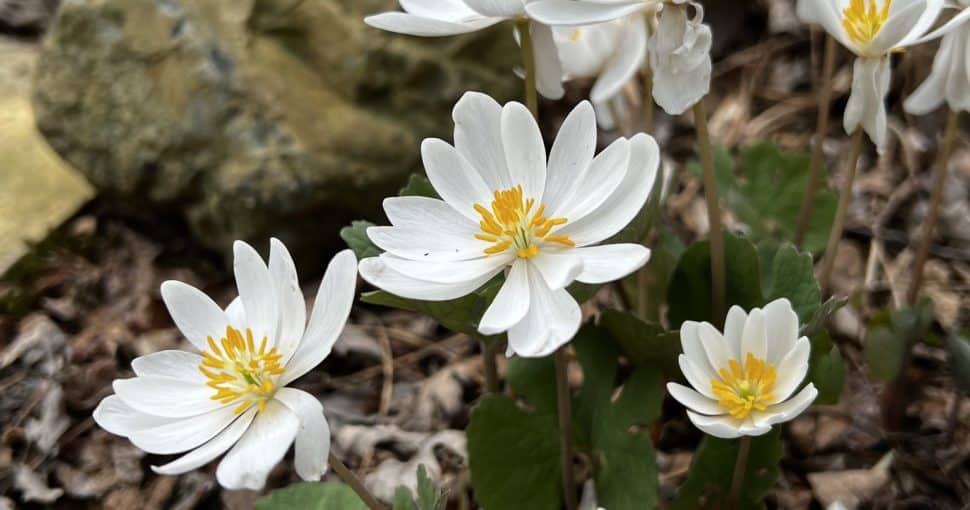There are thousands of poisonous plant species in the world, and some might even be in your backyard, locality, city, or state. Many of these species are present in the United States. Even though Maine is a relatively safe state when it comes to toxic flora, there are still a few varieties that can cause trouble when you come into contact with them or ingest them. Read on to discover the poisonous plants in Maine!
Contents
- 1. Giant Hogweed (Heracleum mantegazzianum)
- 2. Wild Parsnip (Pastinaca sativa)
- 3. Water Hemlock (Cicuta)
- 4. Queen Anne’s Lace/Wild Carrot (Daucus carota)
- 5. Poison Hemlock (Conium maculatum)
- 6. Trumpet Vine (Campsis radicans)
- 7. Stinging Nettle (Urtica dioica)
- 8. Poison Sumac (Toxicodendron vernix)
- 9. Poison Oak (Toxicodendron diversilobum)
- 10. Poison Ivy (Toxicodendron radicans)
- 11. American Yew (Taxus canadensis)
- 12. Bloodroot (Sanguinaria canadensis)
- 13. Lupine (Lupinus)
- 14. Azaleas (Rhododendron)
- 15. Milkweed (Asclepias)
- 16. Klamath Weed/St. John’s Wort (Hypericum perforatum)
Maine residents typically like spending their summers nestled among greenery. Whether you like picnicking in your neighborhood park, hiking a nearby trail, or biking across town, you will need to stay clear of the poisonous plants in your vicinity. Similarly, if you take your pets out for walks, you will need to keep them away from poisonous plants in Maine.
Even though the state is home to many gorgeous plant species, it is also home to some invasive and toxic weeds, bushes, and trees. Some of them are harmless to humans but harmful to animals, while others are injurious to both. Some poisonous plant species only cause toxicity when you come into contact with them, while others cause harm when you ingest them.
Toxic plant species in Maine can cause skin inflammation, rashes, itchiness, blisters, eye irritation, and more. Some poisonous species can also cause respiratory arrest, muscle paralysis, injury to the central nervous system, and more deadly reactions. If you’re aware of the poisonous species in your state, you can keep yourself, your children, and your pets out of harm’s way.
So, without ado, here’s an overview of 16 poisonous plants in Maine:
1. Giant Hogweed (Heracleum mantegazzianum)
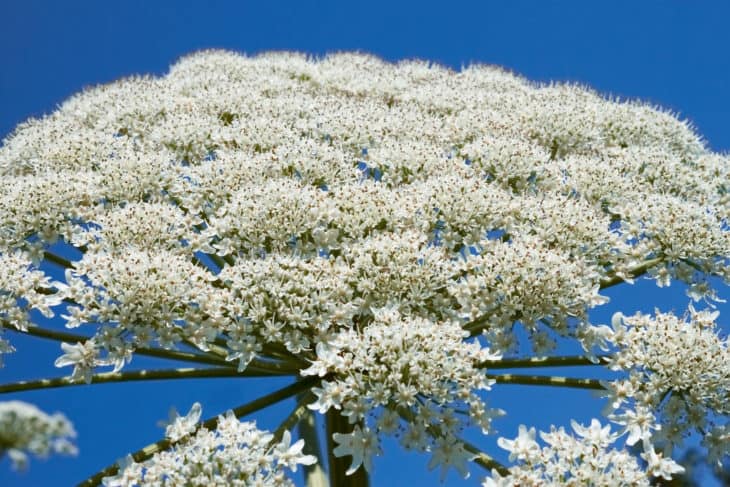
Introduced to the US in the early 20th century, Giant Hogweed is a large, invasive plant that can cause searing burns and permanent scarring within 24 to 48 hours of contact with its body or sap. It’s a biennial or perennial herb with 2-4 inches-long, hollow, ridged stems, 5-feet-wide, incised, compound leaves, and large compound umbels of white flowers. Today, it grows along rivers, streams, yards, roadsides, and in moist, well-drained soils with abundant sunlight.
2. Wild Parsnip (Pastinaca sativa)
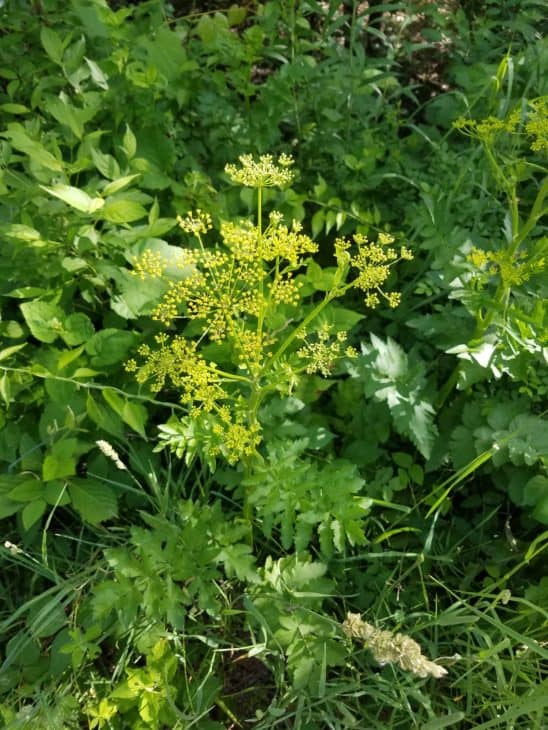
Wild Parsnip is a perennial or biennial herb that produces stems, fruits, leaves, and flowers that cause intense burning, rash, and severe blistering if you come into contact with them on sunny days. It causes a chemical burn brought on by the skin’s sensitivity to light. Wild Parsnip has pinnae, hairless, broad leaves, and hundreds of tiny yellow flowers arranged in loose compound umbels.
3. Water Hemlock (Cicuta)
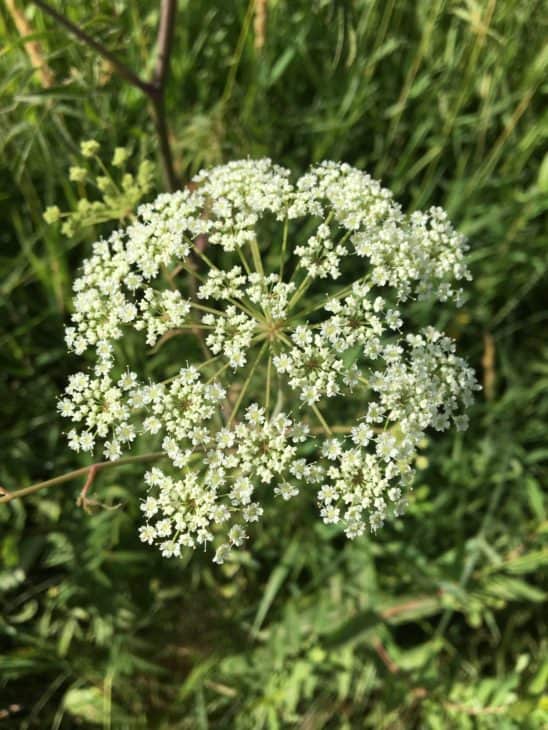
Water Hemlock is an aggressively toxic plant whose toxin (cicutoxin) acts on the central nervous system and is a violent convulsant that can cause grand mal seizures and death. This plant has a thick rootstalk, umbrella-like clusters of tiny, white blossoms, and side-veined leaves. The tuberous roots and green seed heads of the plant are highly toxic. The chambers in the rootstock, stems, and leaves contain cicutoxin.
4. Queen Anne’s Lace/Wild Carrot (Daucus carota)
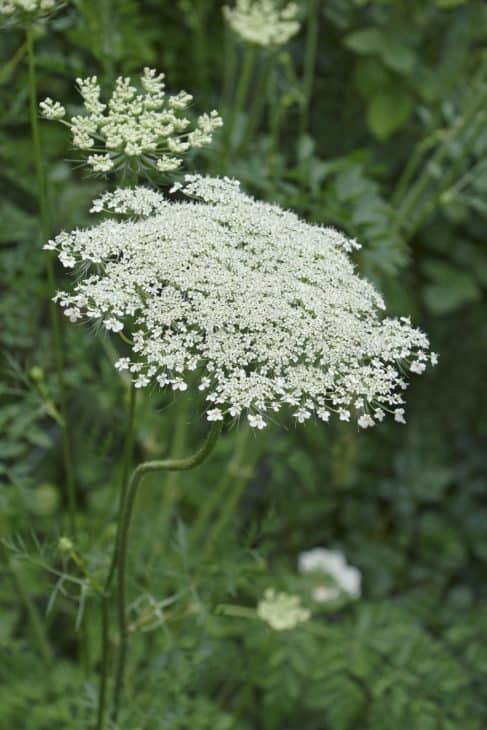
Also known as Wild Carrot, the Queen Anne’s Lace is a wildflower herb naturalized in the US. Originally from Europe, this invasive weed can cause irritation or blistering on the skin if you have sensitive skin. Moreover, ingesting parts of the plant can be toxic for some people. This biennial plant has fern-like foliage, flattened clusters of small white flowers with dark-hued florets, and spiky fruit that curls inward.
5. Poison Hemlock (Conium maculatum)
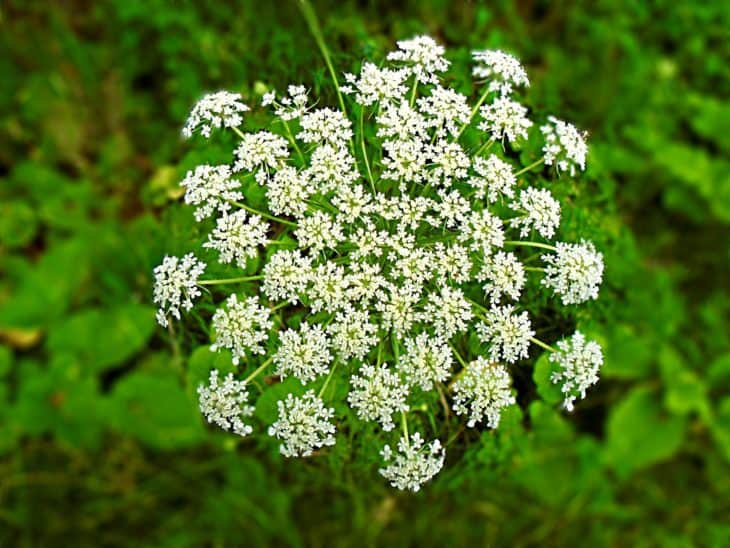
Poison Hemlock is a widespread, toxic, biennial weed found in open sunny fields, on roadsides, and on vacant lots. It features hollow stems with purple or reddish streaks and spots, bright green, fern-like, teethed leaves with a musty odor, and umbrella-shaped clusters of small, white flowers. This weed is acutely toxic and should not be ingested or touched. It can cause pupil dilation, dizziness, slowing of the heartbeat, paralysis, and death.
6. Trumpet Vine (Campsis radicans)
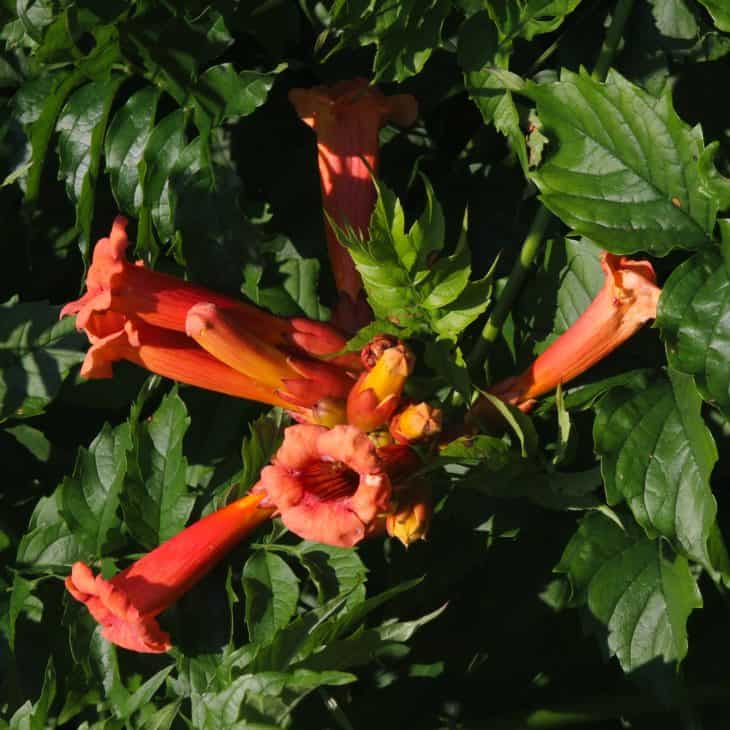
Trumpet Vine is a woody, perennial, invasive vine in sunny, wet regions. It features masses of yellow, red, and orange trumpet-shaped blooms that attract hummingbirds. This plant’s fruits, sap, foliage, and flowers are toxic and can cause mild to severe skin irritation and rashes in humans and livestock; hence, its common name is cow itch vine.
7. Stinging Nettle (Urtica dioica)
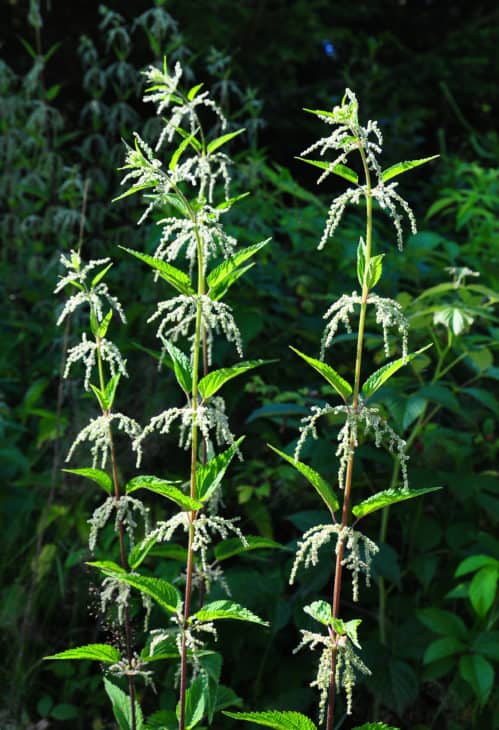
Stinging Nettle is an erect perennial with egg- or lanced-shaped, opposite, rounded leaves with toothed margins and hairy, stinging undersides and pointed tips. It features inconspicuous, yellow to green flowers, egg-shaped, tan fruits, and erect, unbranched stems. Stinging Nettle has fine hairs on its stems and leaves that cause skin irritation. Its spines are also painful to touch.
8. Poison Sumac (Toxicodendron vernix)
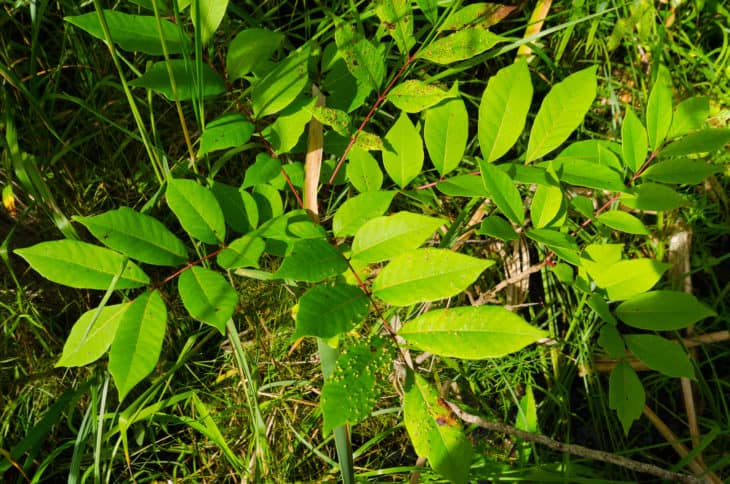
Poison Sumac is a deciduous, woody small tree or shrub that inhabits swamps, hardwood forests, and wet areas. It releases a poisonous oil known as urushiol, which causes an allergic skin reaction called contact dermatitis. Contact with the plant causes itchy, burning, swollen, blistery skin 8 to 48 hours after exposure. This plant features reddish stems, elongated, v-shaped, velvety, smooth-edged leaves, small, yellow-green blooms, and ivory-white to gray fruits.
9. Poison Oak (Toxicodendron diversilobum)
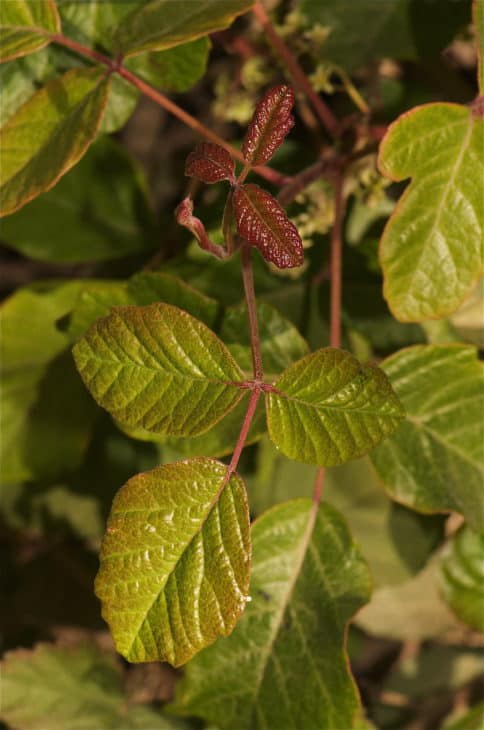
Poison Oak is native to North America, Western North America, and the southeastern US. It contains urushiol, and contact with its leaves and sap can cause your skin to itch and develop painful inflammation. Pacific Poison Oak is a small shrub or climbing woody vine with compound leaves that feature five-lobed leaflets. Atlantic Poison Oak is a small shrub with three-lobed, hairy leaflets that vary in shape.
10. Poison Ivy (Toxicodendron radicans)
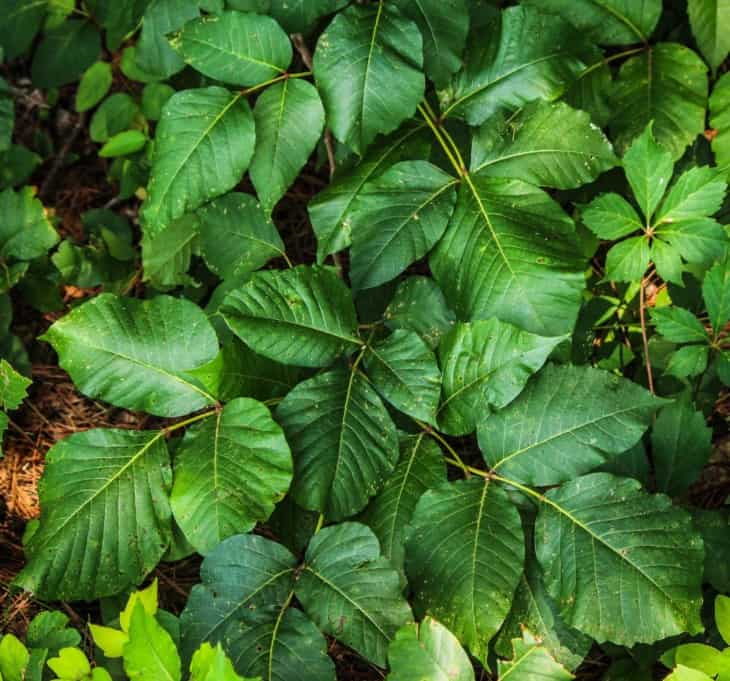
Poison Ivy is native to eastern North America. Nearly all parts of this plant contain urushiol, which causes severely painful inflammation and itchy skin called contact dermatitis. This dioecious plant has a variable growth habitat. It features toothed, hairy, loved leaves that turn red, yellow, and orange in fall. It has small, yellow or green blooms and greenish or white drupes.
11. American Yew (Taxus canadensis)
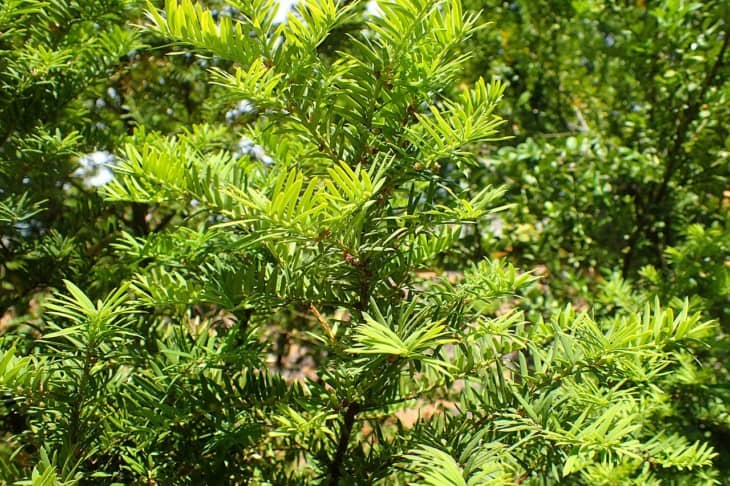
American Yew is an evergreen shrub with several ascending branches, a thin, scaly bark, and dark green, flattened leaves with pointed tips. This monoecious plant features sporophylls and red, berry-like, fleshy cones. American Yew’s foliage and seeds are toxic to humans and livestock. However, its red cone is not considered too toxic.
12. Bloodroot (Sanguinaria canadensis)
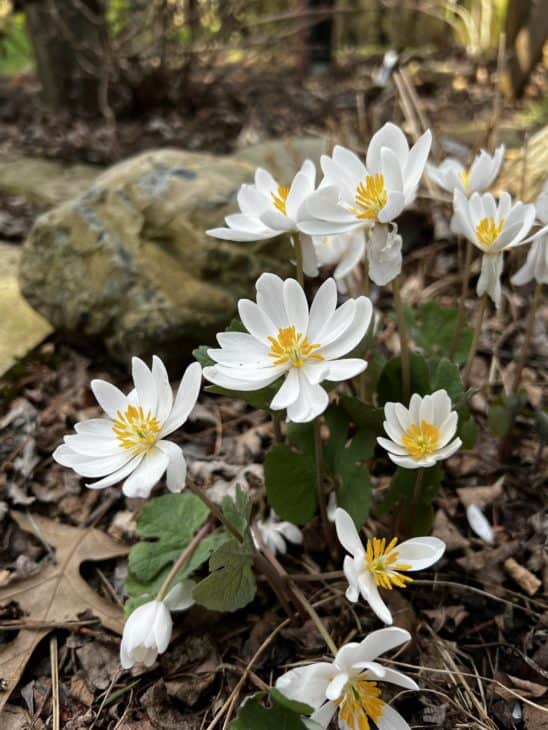
Also known as Red Puccoon, Bloodroot is native to eastern and Midwestern North America. It features shiny, white, cup-shaped blooms with eight petals and bright yellow stamens. It is considered a toxic plant but is also used for herbal medicine. It features a reddish stalk, large, veiny, rounded, blue-green leaves, and seeds with fleshy structures called elaiosomes.
13. Lupine (Lupinus)
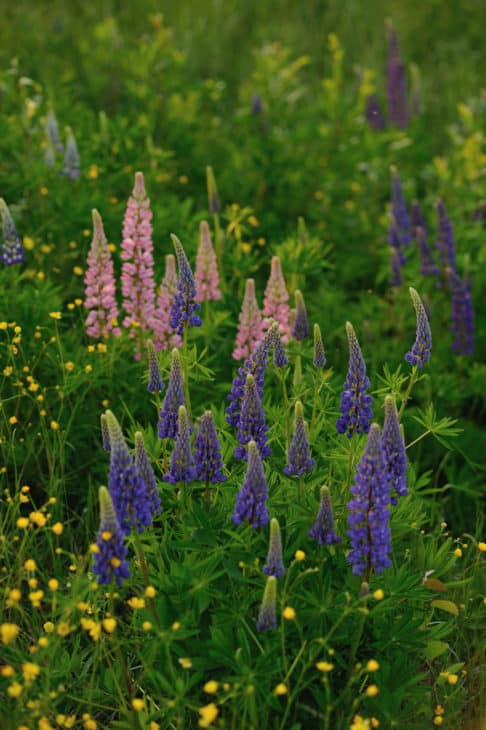
Lupine is an ornamental, herbaceous, annual, and perennial plant with elegant flower spikes. It contains high levels of an alkaloid called lupanine. When ingested in high amounts, it can cause toxicity in humans and livestock. This woody plant features upright flower spikes that come in multiple hues, such as white, blue, pink, red, yellow, and more. It also has palm leaf-like foliage.
14. Azaleas (Rhododendron)
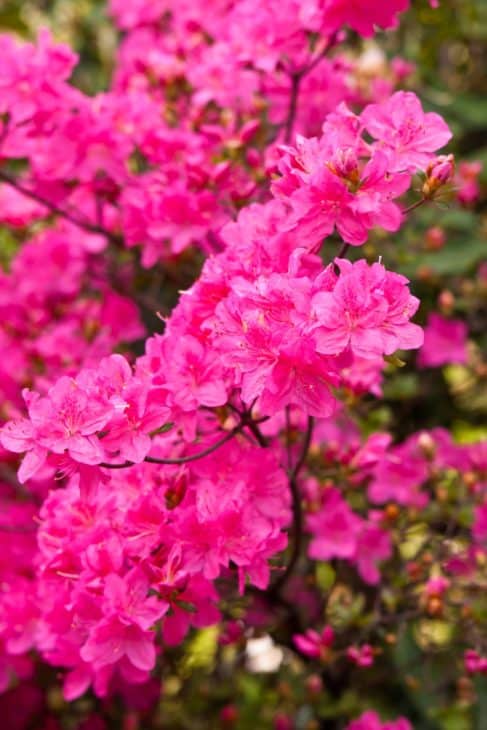
Azaleas are ornamentals grown in gardens for their showy flowers. However, all types of azalea bushes are poisonous as they contain toxins known as grayanotoxins. Ingesting them can cause burning in the mouth, followed by excessive saliva production. These plants are usually deciduous but can be evergreen. They feature funnel-shaped, often fragrant, two-lipped blooms with five projecting stamens.
15. Milkweed (Asclepias)
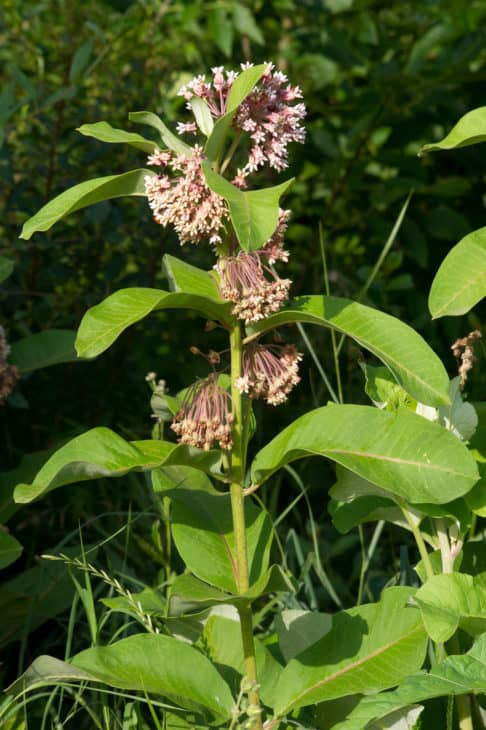
Milkweed is an herbaceous, flowering plant that grows throughout South and North America and is the food source for milkweed butterflies. All parts of this plant contain toxic glucosidal substances known as cardenolides. When ingested in small amounts, they can cause nausea, weakness, diarrhea, and confusion. However, when ingested in large amounts, they can cause respiratory paralysis, seizures, and death. Touching the plant can also cause skin and eye irritation. Milkweed features clusters of flowers with five petals, podlike fruits, and tufted seeds.
16. Klamath Weed/St. John’s Wort (Hypericum perforatum)
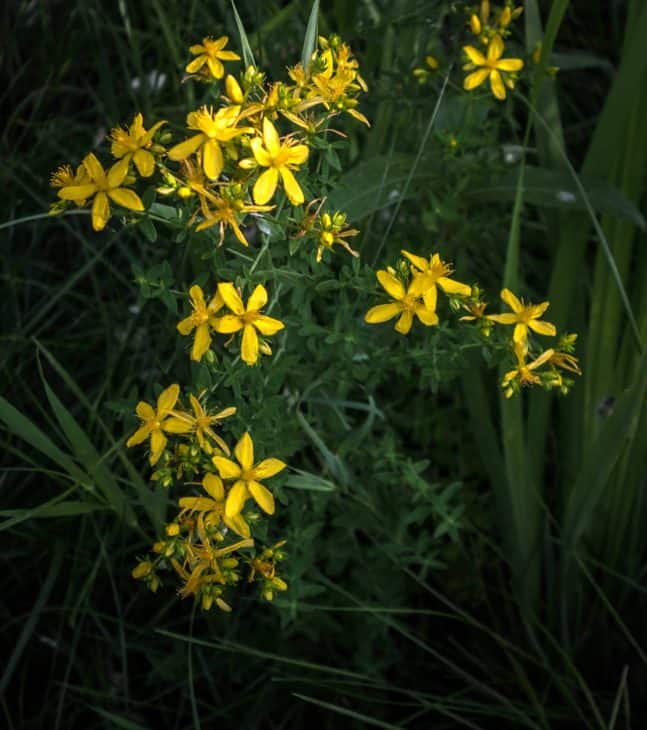
Saint John’s Wort is a shrub native to tropical and temperate regions. It is poisonous to livestock and causes behavioral changes, photosensitization, spontaneous abortion, and fatality. This plant has become a noxious invasive species in North and South America, Australia, and South Africa. It features simple opposite or whorled leaves with smooth margins, yellow flowers with five petals and bundles of stamens, and dry capsule-like fruits.

